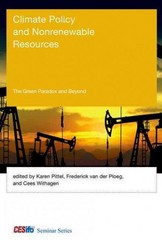Question
its complete ///This problem analyzes the effect of future financial constraints on current investment decisions. Consider an economy with two dates, denoted by t =
its complete
///This problem analyzes the effect of future financial constraints on current investment decisions. Consider an economy with two dates, denoted by t = 1, 2. There are two goods: consumption and capital. There is a continuum of entrepreneurs and a continuum of consumers. All individuals have linear utility and consume only in period 2, so U = E[c2]. There is a fixed supply of capital k, initially owned by the consumers. Consumers are endowed with a large amount of consumption good in each period and they can store this good between dates, such that if they store one unit of the consumption good in t = 1 they get one unit of the good in t = 2. The entrepreneurs have access to a linear technology that produces A units of consumption good in period 2 per unit of capital they own. The consumers have access to a concave technology G( ?k G0 (k) = 0. The entrepreneurs enter period 1 with a given net worth N1 in terms of consumption goods. Assume agents can trade a risk-free bond b2 that pays an interest rate r. a) Argue that the gross rate of return on the risk-free bond is equal to 1 (i.e., the net return, r, is zero). b) Suppose that entrepreneurs face no borrowing constraints. State the optimization problems of an entrepreneur and a consumer. Show that the equilibrium capital price is q1 = A and the entrepreneurs buy k ? , where G0 (k ? k ? ) = A. c) Suppose that the entrepreneurs cannot borrow at all, so q1k2 ? N1. Find the equilibrium price and allocation, show that q1 ? A in equilibrium and that the expected utility of the entrepreneur is A q1 N1 (18) irrespective of whether the constraint q1k2 ? N1 binds or not. Show that q1 is increasing in N1 for N1
This question considers a distortionary labor income tax in the New Keynesian model. The representative household's utility function is: C 1?? t 1 ? ? ? N 1+? t 1 + ? (6) The household's budget contraint is: QtBt+1 + PtCt = Bt + (1 ? ?t)wtPtNt + ?t + PtTt (7) C is consumption, N is hours worked, w is the real wage, ? is the distortionary labor income tax rate, ? are firm profits distributed lump sum, T are lump-sum taxes. B are bonds that are in zero net supply. P is the aggregate price level. Qt is the bond price. In linearized form, the household's Euler equation and labor supply conditions are: Etc?t+1 ? c?t = 1 ? (?it ? Et??t+1) (8) w?t = ?c?t + ?n?t + ??t (9) The linearized equilibrium conditions for firms are: y?t = ?nt (10) w?t = ?mct (11) ??t = ?Et(??t+1) + ?mc? t (12) The resource constraint is: y?t = ?ct (13) Monetary policy follows a simple Taylor Rule: ?it = ????t (14) consumption, ?wt is the real wage, ?nt is hours worked, ?yt is output. In deviations from 7 steae t = 0, which implies ?xt = ?yt = ?ct .) c) Using the method of undetermined coefficients, find the response of the welfare relevant output gap and inflation to an exogenous cut in income taxes when prices are sticky and monetary policy follows the Taylor Rule above. To do this, guess that the solution for each variable is a linear function of the shock ???t . (Hint: you will need to rewrite the consumption Euler equation in terms of the welfare relevant output gap noting that ?xt = ?yt = ?ct). d) Discuss how, and why, labor income tax cuts affect the natural rate of output, the output gap and inflation. Are these results surprising?


Step by Step Solution
There are 3 Steps involved in it
Step: 1

Get Instant Access to Expert-Tailored Solutions
See step-by-step solutions with expert insights and AI powered tools for academic success
Step: 2

Step: 3

Ace Your Homework with AI
Get the answers you need in no time with our AI-driven, step-by-step assistance
Get Started


